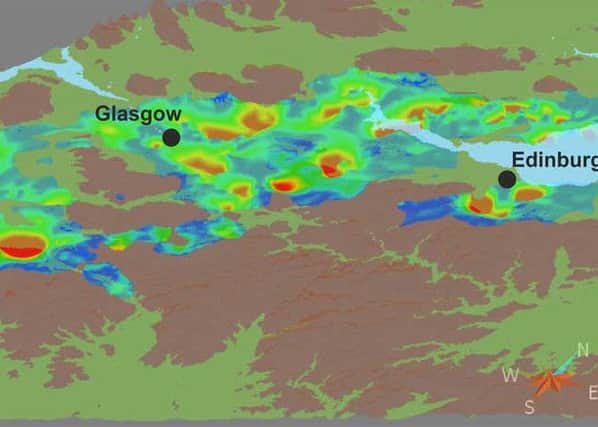Could Scotland’s old mines provide clean energy to homes?


Major research into whether Scotland’s old coal mines can deliver low cost heating to hundreds of homes is now underway.
The Scottish Government earlier awarded around £200,000 to four projects across Scotland to research the potential of turning the thermal energy stored deep in the ground into clean electricity.
Advertisement
Hide AdAdvertisement
Hide AdAn abandoned mine at Hartwood in North Lanarkshire is amongst projects being examined for the potential use of geothermal energy in Scotland.
Paul Steen, associate director of Ramboll Energy, has been involved in the Hartwood research
The heat is pulled out by pumps which work like fridges, concentraing heat energy from the water in the mines that is naturally warmed by the earth’s crust.
It is then stored before being distributed to homes through a district heating network.
Mr Steen said at Hartwood, the water already sat at around 17 degrees Celsius.
He said: “You are taking water from around 500 metres below with this heat coming through the earth’s crust.
“The results so far are reasonably promising.
“Mines are natually close to settlements as communities developed around working mines.
“Today, these areas often have higher rates of fuel poverty and these project could really add value to the community. You are tkaing heat from the legacy of the mine which justified the existence of the communitites.”
Advertisement
Hide AdAdvertisement
Hide AdMr Steen said much of the work had been done on the geological side with more research required on how to deliver the heat to customers.
“You have to get it to customers on the basis that you are selling heat an attractive rate,” he said.
There are a handful of operational geothermal schemes in Scotland already.
Eighteen homes in Glenalmond Street, Shettlestone, Glasgow, have been heated this way since the late 1990s.
In 2013, it was reported that household heating bills were around £160 per year, as compared to £660 for an average Scottish family.
The British Geological Surveys says there is significant potential for further geothermal projects give
extensive undermining of The Midland Valley, or the Central Bel
The Scottish Government originally funded five feasability projects in June but a landowner at Polkemmet in West Lothian dropped out after his site was put out for sale.
Advertisement
Hide AdAdvertisement
Hide AdMr Steen has also been involved in researchnig how heat can be drawn from granite deep underground near Banchory in Aberdeenshire.
He said that water pulled out of granite was around 70 degrees celsius but that several kilometres of drilling was required.
Research into potential geothermal scheme is also underway at the site of the new Aberdeen Exhibition and Conference Centre (AECC) and at Guardbridge Energy Centre in Fife.
Each projects are due to report in Spring to the Scottish Government with officials to consider whether to take forward further investment.